WA STONEFRUIT North America
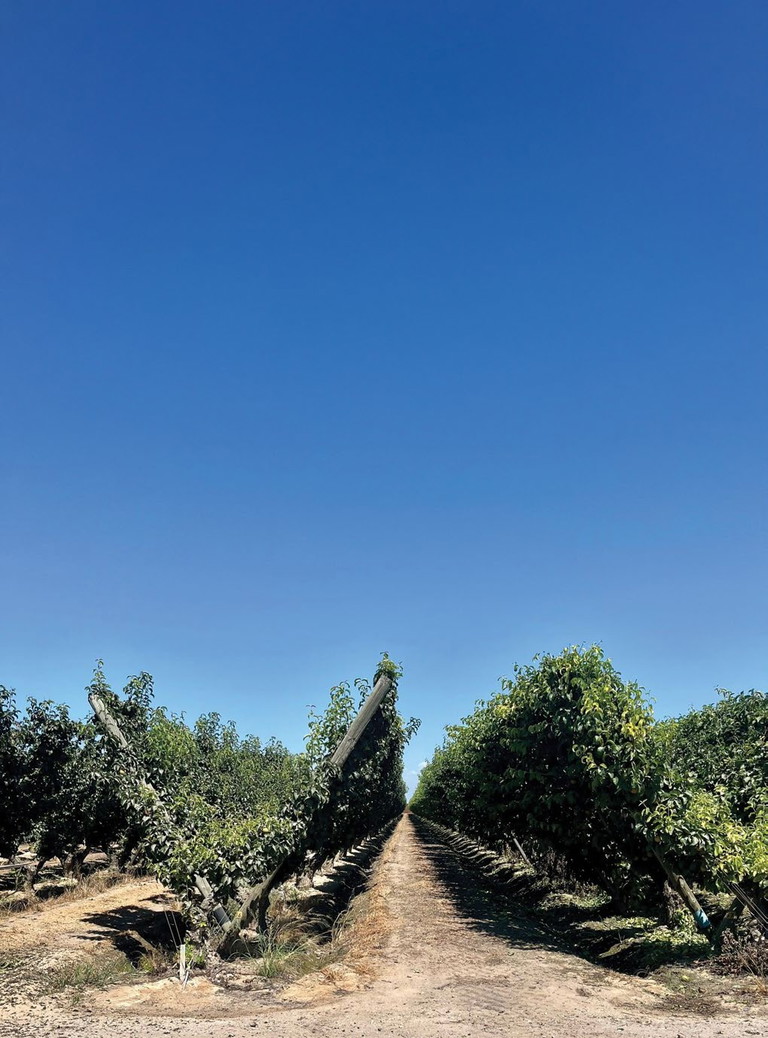
PHOTOGRAPHY Mark Scott
Adventures of a West Australian orchardist
TRAVELLING IN NORTH AMERICA
Mark Scott, a dedicated member of the Stone and Pome Fruit APC committees, recently shared valuable insights with fellow members and staff following a privately organised orchard tour he undertook in California and Washington State this July. He has kindly agreed to share his observations with the wider growing community through this publication. One of the most striking takeaways is the shared attitudes and challenges faced by growers across both countries.
Words Mark Scott
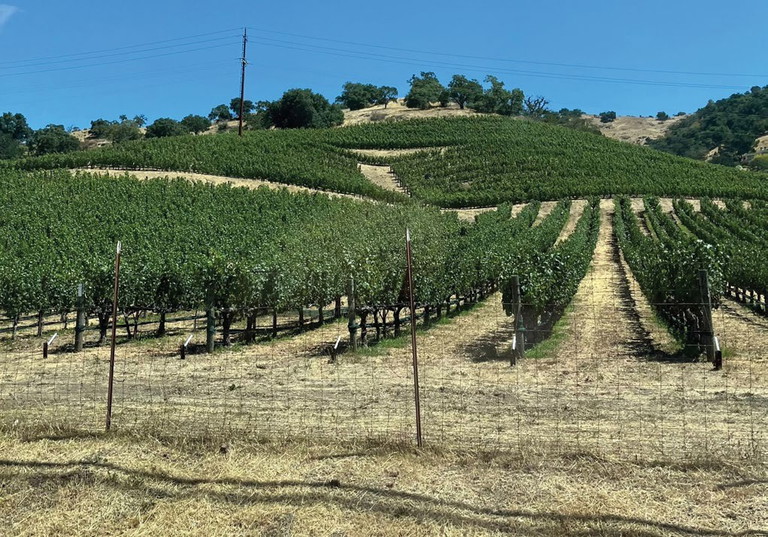
Orchard
construction:
Standard planting
designs feature
large trees,
approximately
four metres
tall, trained on
Tatura trellises.
MY family recently spent three days in California’s Central Valley and two days in the Yakima/Quincy region of Washington State. During our visit, we toured Zaiger and Bradford Farm nurseries, as well as two growers in California, thanks to Valente Bioscience. We also visited a local grower and attended a field day in Washington State. For those who have previously toured US orchard regions, some of the following may be familiar.
Stone Fruit
Exciting new varieties are emerging from both nurseries, including pluots, peaches, nectarines and apricots. Some unique small-fruit lines, such as cherry plums and pluots,show potential to compete with berries. However, their viability in Australia remains uncertain, given the labour-intensive nature of picking and packing.
The scale of operations in the region is remarkable, driven by the large local consumer base. In California’s Central Valley alone, there are seven million acres of irrigated horticulture, with hundreds of thousands more in surrounding areas.
Medium-sized growers typically manage around 2,000 acres (800 hectares), while larger operations exceed 7,500 acres (2,500 hectares). Each block of a given variety spans approximately 50 acres.
This scale has led to significant consolidation, with five growers producing over 90% of California’s peaches and nectarines. As a result, some nurseries have secured exclusive supply agreements with growers across the United States.
X disease, also known as little cherry disease, is caused by a phytoplasma and leads to substantial losses in cherries and other stone fruits in Washington State. Affected fruit are small, pale and poorly flavoured, rendering them unmarketable. The disease spreads via grafting and three specific leafhopper insect vectors.
From a biosecurity standpoint, we must be vigilant to prevent its introduction into Australia. Although Australia hosts 22 species of leafhoppers, it remains unclear whether any are capable of transmitting the disease.
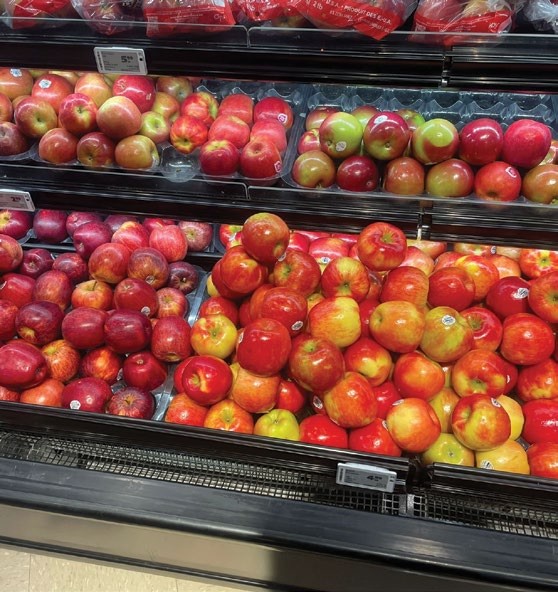
Apples
Australian production systems are largely aligned with contemporary orchard practices. Research into planting systems, rootstocks and soil health mirrors industry standards abroad. Notably, studies have shown that drape nets can significantly reduce codling moth infestations. Trials have also explored the release of natural predators under these nets to control woolly aphids.
The use of overhead cooling systems, such as sprinklers or misting, is common to prevent sunburn on crops; however, factors like water quality, availability, and cost play a significant role in their implementation.
In regions with high chilling hours, where snowfall averages around 60 cm annually, thinning strategies typically rely on primary agents such as ATS and lime sulphur, followed by secondary thinners to complete the process.
A considerable amount of pre-flowering bud elimination occurs, followed by manual thinning before harvest to improve fruit size and quality. This is made feasible by generally lower wage rates in the sector.
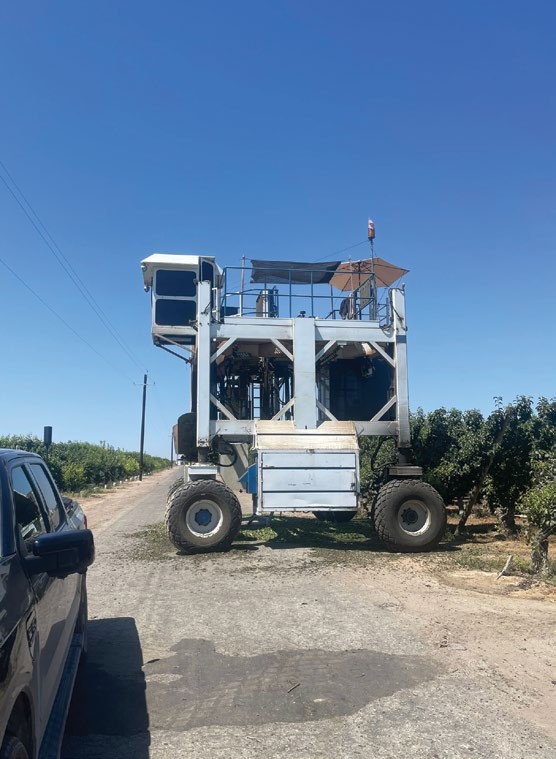
Harvester in action.
Labour
Labour laws have changed in both jurisdictions, with overtime now needing to be paid after 40 hours. It was also explained that their guest worker program, like our palm scheme, requires them to pay $US22 ($AU33) an hour, along with slightly higher payroll taxes.
Post harvest
The significant number of very large integrated pack houses (which also provide bins to growers) — particularly in Washington must provide some fierce competition in the post-harvest side. As guest Future Orchard speakers have expressed in the past, very few growers are breaking even, and this coming crop is expected to be one of their largest ever, which may force prices down.
It didn’t seem that orchard monitoring of things like fruit numbers and size, to make decisions about labour force and water availability, was commonplace. From a regulatory perspective, there appears to be a more direct inspection model for farms regarding chemical use, but it relies on growers’ honesty, and there are fewer third-party inspections of growers like HARPS.
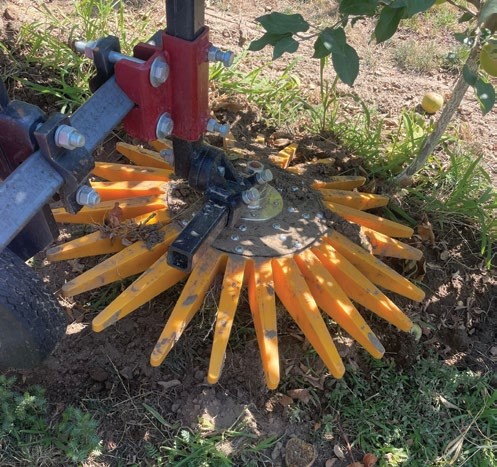
Other take-aways
1. In both California and Washington State, regulations require that all trees be chipped rather than burned when they are removed. California is providing a subsidy to support this initiative. Efforts are underway at both grower and national levels to identify best practices for preventing disease transmission during replanting.
2. Land prices in the Central Valley average around US$40,000 per acre (including water rights), equivalent to approximately AU$153,000 per hectare.
Summary
As in Australia, overall sentiment toward the industry in the US is subdued. However, during the Washington State field days, which attracted over 80 attendees, I observed that more than 30% of the participants were under 30 years old and were either studying or conducting research in horticulture — which gives me some comfort in the future of orcharding in the country. However, as is often the case, fewer than 30% of the attendees were actual growers.
If you haven’t already, I would certainly suggest that a visit is worth the effort.
MORE INFORMATION
Nardia Stacy, nardia@pomewest.net.au, 0411 138 103.